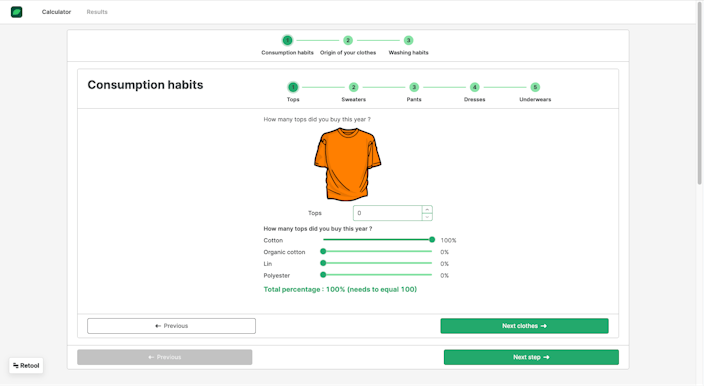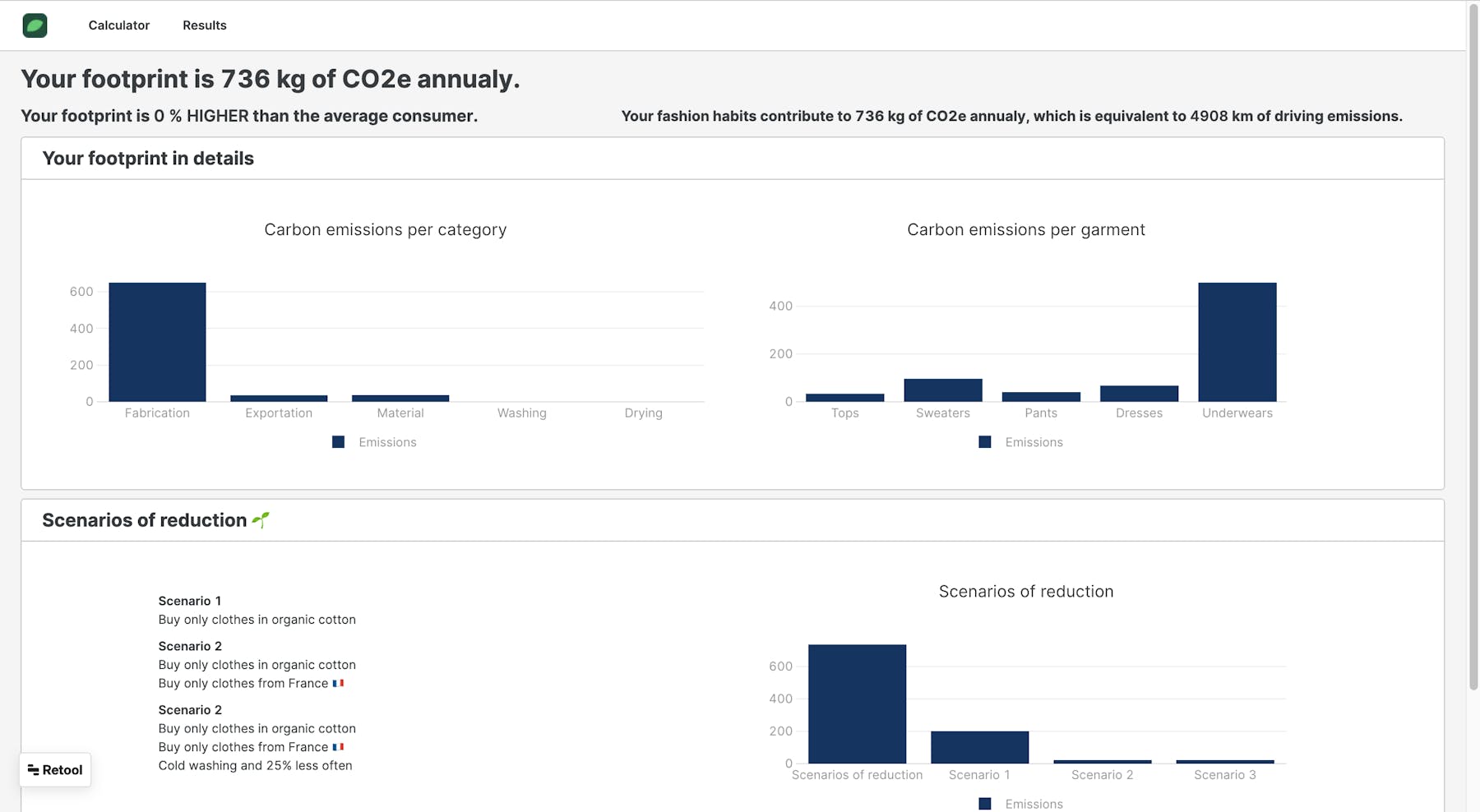Build your own application for the Climate App Store
Build your own application for the Climate App Store to estimate the amount of your carbon emissions associated with a particular activity or set of activities.
Greenly
2023-05-03T00:00:00.000Z
2023-05-03T00:00:00.000Z
en-gb

By
Arnaud Delubac,updated 3 May 2023
Create your Own Carbon Footprint App
How does a carbon footprint app work?
A carbon calculator is a tool that allows you to estimate the amount of carbon emissions associated with a particular activity or set of activities. Typically, you input data such as the type of activity, the duration, and the distance traveled, and the calculator will then provide you with an estimate of the carbon emissions associated with that activity.
For example, let's say you want to calculate the carbon emissions associated with driving your car. You would input data such as the make and model of your car, the distance you drove, and your average speed. The carbon calculator would then use this data, along with emission factors that take into account the fuel efficiency of your car, to estimate the amount of carbon emissions associated with your trip.
Carbon calculators can be used in a variety of contexts.
For individuals, they can be used to estimate the carbon footprint associated with their daily activities, such as driving, flying, or using electricity. This information can then be used to identify areas where they can reduce their carbon footprint, such as by driving less or using renewable energy sources.
For businesses, carbon calculators can be used to estimate the carbon emissions associated with their operations. This information can then be used to identify areas where they can reduce their emissions, such as by improving the energy efficiency of their buildings or switching to renewable energy sources.
Methodology for Carbon Footprint Calculation
GHG emissions to the atmosphere, caused directly and indirectly by daily activities, define the Carbon Footprint of any entity.
Carbon Footprint data contain information about effects on climate change and water usage. All data obtained are intermediate indicators of the impact pathway before the eventual damage occurs that could have adverse effects on human health, ecosystems, and resource availability.
GHG accounting with respect to the operational boundary was conducted according to the three scopes proposed by the GHG Protocol, namely
- Scope 1: direct emissions from activities owned or controlled by the organization (e.g., own vehicle fuel, possible GHG leakage from cooling systems)
- Scope 2: indirect emissions associated with purchased electricity
- Scope 3: indirect emissions from center activities that occur at sources outside its control and are not classified as scope 2 (e.g., transport, business travel, hotel stay, material consumption, and waste).


Conversion factors called Emission Factors facilitate the calculation of CO2 emissions by multiplying activity data, expressed in their respective international units and converted into kilograms of carbon dioxide equivalent (kgCO2e). CO2e is the universal unit of measurement to indicate the global warming potential (GWP) of GHGs, expressed in terms of the GWP of one unit of carbon dioxide (See Formula). Consulting numerous reference sources to select the most appropriate conversion factors, considering certain selection criteria such as accessibility, consistency, and transparency in revisions and updates is paramount. Every year, during the first months of the year, conversion factors are reviewed and updated.
GHG (kg CO2e) = aspect quantity data x emission factor
Most emission factors can be used directly as defined in the chosen source. In certain instances, suitable factors needs to be calculated specifically, e.g., using average values when slight differences exist among the sources (e.g., hotel stays, rail travel, car trips, and the like) or using ad hoc factors that can be calculated for specific aspects and cross checked against calculators from relevant sources (e.g., air travel).T
Your Emission Factors’ Library
This public Notion page provides you with all the public emission factors databases you may want to investigate to develop your carbon footprint calculator.
For each, read the description and if relevant, access the database directly and download the excel file.
Don’t hesitate to reach out to Greenly’s support team for any questions related to emission factors use.
Get your App Certified for Greenly Climate App Store
To become certified, your carbon calculator needs to meet our minimum requirements. Additional requirements may apply depending on the functionality of your Climate App.
Outlined below are the checkpoints we will review your integration against during the certification process. Take time to review these before you submit your integration for certification.
Checkpoint 1: App name
The climate application name must reflect the go-to-market name of your app or product and cannot include the word “Greenly”.
Climate App Name examples:
- Freight Carbon Footprint App
- Textile LCA Calculator
- Menu Impact Calculator
- Measure the impact of your ads campaign
Checkpoint 2: Branding
Greenly design system
Please respect the Greenly design system in your apps. It is already included in our instance of Retool normally, so no big hassle on your side. It includes, for example, colors of buttons and texts.
- Primary color : #23A96C
- Additional color : #082216 , #88E2A6
- Text color : #393D3F
- Fonts : Inter, Inter Black, DM Sans
Greenly Logos & Gimmicks
Please find the Greenly logo here for your apps.
Checkpoint 3: Development language
Retool is a no-code tool that allows users to create custom web applications with a simple drag-and-drop interface. It's a powerful tool that allows users to build complex applications without needing to write any code. Retool will be the platform used to create all carbon calculators live on the Climate App Store.
To get started with Retool, you will first need to create an account. To do so, please follow these instructions:
- Go to https://retool.com/
- Click “Start for free”
- Create your account
- Name your workspace
Once logged in, they will be taken to the Retool dashboard, where they can create a new application. From there, they can choose from a variety of pre-built components, including buttons, forms, tables, and charts, and drag and drop them onto the canvas to build their application.
Retool also allows users to connect to data sources, such as APIs or databases, to populate their applications with dynamic data. This means that you will be able to use the emission factor databases provided by Greenly to automatically populate your carbon calculators with the latest data.
One of the benefits of Retool is its ease of use. Even if you have little to no coding experience, you will be able to create custom applications using Retool's intuitive interface. Additionally, Retool's extensive documentation is available.
Checkpoint 4 : Data synchronization
Translations
Please include all texts in the page in a single transformer, called t , that returns the following object {someHandle:"associated text", anotherHandle : "other text"} . The text fields can then be dynamically associated to >>>{{t.value.someHandle}}. This is necessary for future homogenous translation of the app (not needed on your part)
Connection to Google Sheet
We make intensive use of Google Sheet as an easy-to-setup, quick-win database solution. We encourage you to use as many Sheets as possible, but we are open to other solutions (feel free to reach out). For us to evaluate and have a full look at our work, please make some public Sheets.
In/out pipe
It is strongly recommended to store all user info in a database (google sheet for example), to make sure data is available after the app is closed and then opened again. It can all be on the same sheet or on a different sheet. Users should have as little as possible access to data from other users.
User-friendly Interface
The calculator should be easy to use, with a simple and intuitive interface. It should also provide explanations on how it works, as well as suggestions for reducing the carbon footprint of one's clothing.
Checkpoint 5: Data visualization & export canvas
The calculator must be able to present data in an easy-to-understand format, such as graphs or charts, to help users identify areas where they can reduce their carbon footprint.
The calculator could provide users with a detailed report of their carbon emissions associated with the activity at stake, broken down by relevant categories. It should also provide recommendations on ways to reduce their carbon footprint.
Climate App Examples
Technical Spec Example: Energy Carbon Impact Measure & Management App
User Interface & tunnel view example: Closet/Textile LCA Carbon Footprint Calculator
Try the calculator and explore the expected User Interface and Experience by clicking here.
For more information please visit https://www.greenly.earth/
Follow Greenly on Twitter, Linkedin and Instagram









